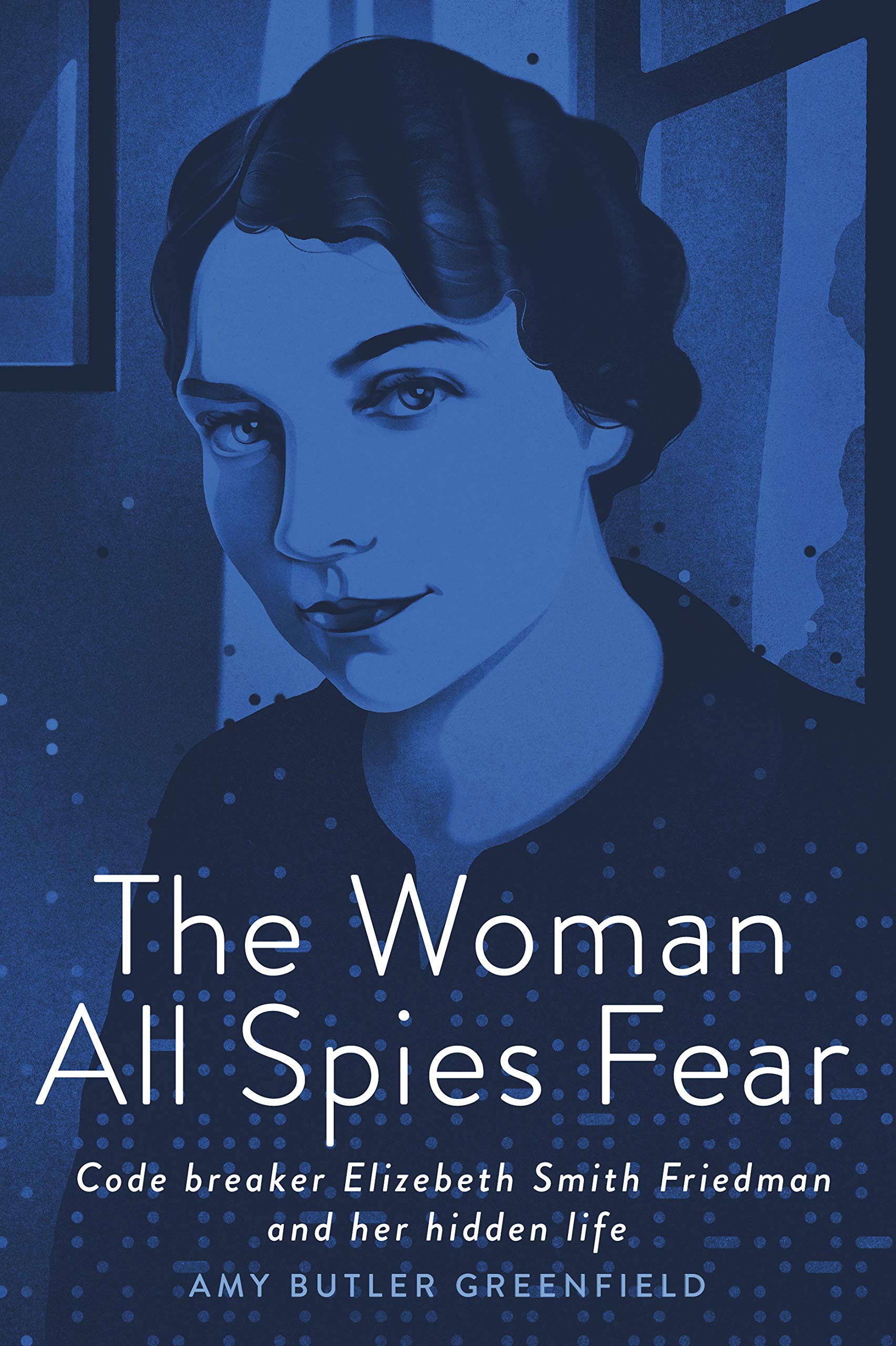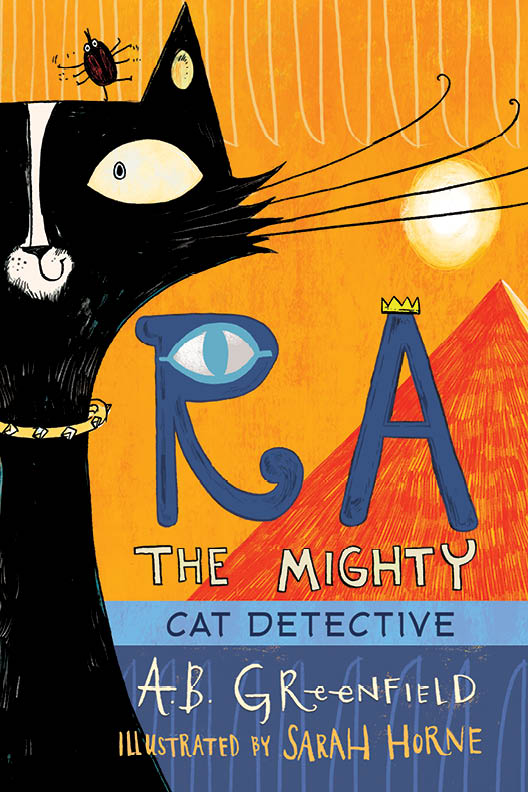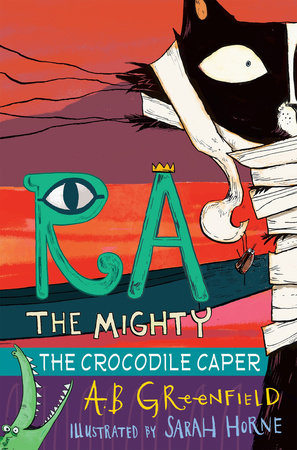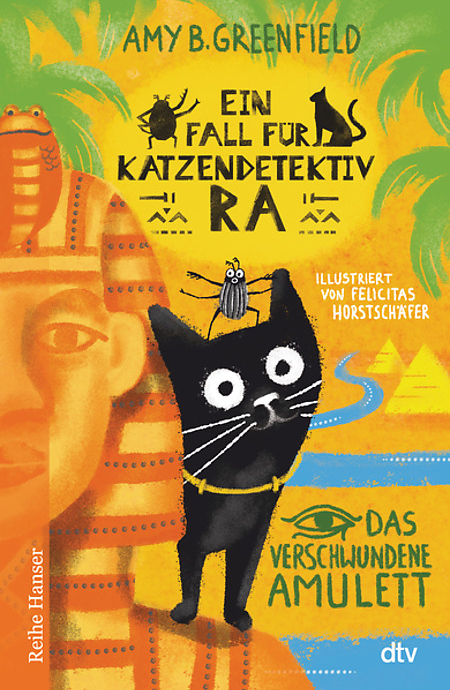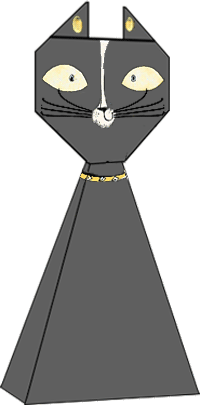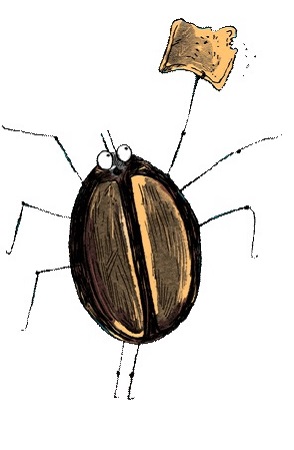Ra the Mighty: Cat Detective
An Educator’s Guide
Discussion questions, writing prompts, and enrichment activities to help you make the most of Ra the Mighty in the classroom or as an independent reading selection.
Ra the Mighty
By A. B. Greenfield
Illustrated by Sarah Horne
Can a lazy cat and
a dung-obsessed beetle
crack a mystery?
Ra relishes his role as Pharaoh’s beloved—and outrageously spoiled—cat. There’s only one mystery that interests him, and that’s when his next snack will arrive. But when a priceless amulet goes missing from the palace and a young servant girl is falsely accused of the theft, Ra’s hardworking scarab-beetle buddy, Khepri, insists that they must save her. Can Ra and Khepri solve the crime? This comically mismatched duo is on the case
Ages 7-10. ISBN 978-0823440276. Jacket art © 2018 by Sarah Horne.
Common Core Aligned for Grades 2-5:
2nd Grade: ELA.RL.2.1,3,7; ELA.W.2.1,2,3,7,8; ELA.SL.3.1,2; ELA.L.2.3
3rd Grade: ELA.RL.3.1,3,4,5,7; ELA.W.3.1,2,3,7,8; ELA.SL.3.1,4; ELA.L.3.4,5
4th Grade: ELA.RL.4.1,3,4,6,7; ELA.W.4.1,2,3,7,8; ELA.SL.4.1,2,4; ELA.L.4.4,5
5th Grade: ELA.RL.5.1,3,4,6,7; ELA.W.5. 1,2,3,4,7,8,9; ELA.SL.5.1,2,4; ELA.L.4.4,5
Download a PDF version of the guide here.
Before You Read:
- Look closely at the cover of Ra the Mighty. Make a list of everything you see.
- What predictions can you make about the book from the cover? When and where do you think it takes place? Who are the main characters, and what are they like? What do you see in the cover that supports your guesses?
- Read the text on the back of the book and on the inside flaps. What does it tell you about the book? Does it change the predictions you made before?
- Write down a question that you hope the book will answer. Share it with the class.
Further exploration: What is a mystery?
All story genres have their own frameworks and expectations. Ra the Mighty belongs to the mystery genre.
Discuss what other story genres there are (fantasy, historical fiction, thrillers, action-adventure…). What elements do mysteries have in common? Have you read other mysteries?
Discuss what you can expect to find in a mystery. For example, mysteries usually have certain kinds of characters:
Detectives and their sidekicks (who try to solve the mystery)
Witnesses (who saw or heard something related to the crime)
Suspects (characters who might be guilty of the crime)
Culprit (the character who really did commit the crime)
Mysteries also include:
An investigation (where the detectives try to learn more about the crime)
Evidence (the facts they discover about the crime)
Alibis (proof that a suspect was somewhere else when the crime was committed)
Clues (evidence that points to the culprit)
Red herrings (facts and ideas that distract the detectives and lead them astray)
Motive (the reason why the culprit committed the crime)
Make a list of the characters as you meet them. Decide what category they belong to. (Some will belong to more than one category!) You might also want to keep track of their alibis, and the evidence for and against them.
Reading Questions
Chapters 1-5:
- This story is told in first person. Who is the narrator? How does Ra describe Khepri and Miu? How do you think Khepri and Miu would describe him?
- How would the story start if Miu was telling it—or Khepri, or Tedimut? Write a short passage using one of these other points-of-view.
- What privileges does Pharaoh’s Cat enjoy? What duties does he have? How does he think others should treat him? How do they really treat him?
- How do Miu, Khepri, and Ra find Tedimut?
- In what ways does Ra think that Tedimut is like a cat? What finally convinces him to take the case?
- Where does the story take place? What details set the scene? Draw a map or a picture of what the palace looks like, based on details from the story.
- Ra enjoys showing the audience hall to Miu. Do you have a place that you would like to show to other people? How would you describe it? Share with the class.
- What is dung? How is it related to scarabs?
- Who is Bastet? Why is she important to Ra and Miu?
- List some of the people in Pharaoh’s court. What are their titles and jobs?
- What kind of magic do cats have? Why doesn’t Ra like to use that magic?
- In Chapter 2, Ra says, “When you’re a cat, observation is everything.” What does he mean?
Chapters 6-11:
- What is the difference between a detective and a sidekick?
- Ra and Khepri interview two witnesses. Who are they? List three important questions they ask. What do they learn? What questions would you ask if you were with Ra?
- Compare and contrast Aat and Bebi. What kind of animals are they? How do they act, look, and speak? How do they treat Ra and Khepri?
- Who is Horus? What is an Eye of Horus? Why would someone wear an Eye of Horus amulet?
- Why didn’t the Great Wife want to wear the missing amulet?
- What are the Royal Mother’s rooms like? Compare them to the Great Wife’s rooms, described earlier.
- Who is Nekhbet? Who is Wadjet? What are turquoise and carnelian?
- In Chapter 10, Bebi admires Ra’s desire to serve “the cause of Ma’at.” What is Ma’at? How does Ra want to serve Ma’at?
- In Chapter 11, why does Ra think that the Overseer and Lady Shepenupet are guilty? Does Khepri agree?
- Why does Khepri think that they shouldn’t have teased Aat?
- What is a glossary? How might you use Ra’s Glossary (at the back of the book) when you are reading?
Chapters 12-17:
- In Chapters 12 and 13, what suspicious things does the Director of Royal Loincloths do? Can you think of any innocent explanations for his actions?
- How do Pharaoh’s subjects address him? How do they behave around him? Why do you think they behave that way?
- How does Pharaoh serve Ma’at? What happens if he doesn’t?
- Define treason. What is the punishment for treason in Ancient Egypt?
- Who is Thoth? Why might there be a painting of him in the schoolroom?
- How does Khepri feel about Ibi and Ini? Why? What words do you think he would use to describe them? How are those words different from the words Ra uses to describe them?
- Why don’t the Royal Mother and the Great Wife get along?
- What does Yuya, the tutor, do that’s suspicious? Can you think of any innocent explanations?
- In Chapters 15 and 15, Ra and Khepri go over the case and the possible suspects. Can you list all the suspects and summarize the cases against them? You could put them in table form.
- Who do you think stole the amulet, and why? Support your opinion with evidence from the book.
- Why is Miu upset with Ra and Khepri? Do you think she is right to be upset?
- Ra loves his snacks. Make a list of all the foods he eats—or dreams about eating.
Chapters 18-23:
- Ra spends a lot of time thinking about snacks. Does this help him? What kind of snacks does he think about? What kind of snacks do you think about?
- In Chapter 18, Ra says that he is “as brave as a lion and twice as fierce.” Is this true? What is the bravest thing that Ra does in this story?
- Who is the bravest character in the book? Write a paragraph defending your answer, with examples from the text.
- According to Ra, why shouldn’t you put a dung beetle in your mouth?
- In Chapter 19, Ra does something “absolutely ridiculous.” What is it, and why does he do it?
- What makes Aat so scary to Ra, Khepri, Tedimut, and Miu? Can you identify phrases from the text that make her sound scary?
- Why did the culprit steal the Eye of Horus amulet?
- In Chapter 22, why does Ra nuzzle Tedimut’s fingers?
- Both humans and cats can communicate a lot without words. Can you list three gestures that Ra and Miu make to express their emotions? How could a human express the same emotions – with words and without them? (Bonus: Can you list some ways that Khepri expresses his emotions through body language?)
- What clues pointed to the real culprit? Pick one of these clues and go back and find where it originally came up in the story. Did you notice it then? Why or why not?
- What happens to the real culprit? Do you think that this a fair punishment? Why or why not? Would you have done something else if you were Pharaoh?
- In Chapter 23, Ra says that being a Great Detective “teaches you who your real friends are.” How does it do that?
Activities for Further Enrichment:
- Now that you’ve read the book, look at the cover again. How does it strike you now? Is there anything that seems different to you? Are there things you would add or take away? Design your own cover.
- The Ancient Egyptians produced many remarkable statues. One of them—the Gayer-Anderson cat at the British Museum—helped inspire this book. It’s one of the most reproduced statues in the world. (Try looking it up in a book or on the internet. Does it look familiar to you?) The British Museum also has wonderful carvings of scarab beetles. At least one of them is bigger than you are! Using these artworks as inspirations, make your own statue of Ra or Khepri out of any material you like.
- Khepri is a sacred scarab beetle, a species known to scientists as Scarabaeus sacer. These remarkable creatures can still be found in Egypt today. Research scarab beetles and make a poster to present to your class. Make sure to list your sources!
- Observation is important for detectives. Test the class’s observation skills by showing them an image (the busier, the better – i.e., a collection of strange objects, a city street, etc.) for one minute. Then give them five minutes to write down everything they remember seeing. Compare lists and discuss.
- In telling his story, Ra mentions Bastet, Ra, Horus, Nekhbet, Wadjet, and Thoth. Pick one of them – or another Ancient Egypt god or goddess – and find out as much as you can about them. Are they associated with animals? What are their powers? Write a report for your class.
- Pick three illustrations from Ra the Mighty and find the text that each picture is based on. What does the artist add to the story? Pick another part of the story that isn’t illustrated and draw your own picture. Why did you choose that part to illustrate? What does your picture add to the story?
- In small groups, pick a scene from the book and write it out as a play. Perform this in your classroom. You could also write a play about a scene that doesn’t happen in the book: e.g., what happened when the amulet was stolen, or what would have happened if Tedimut had been put on trial.
- The Ancient Egyptians were very fond of animals, and they often kept pets. (You can read more about this in the Author’s Note at the end of the book.) If you could have any kind of pet, what would it be? What would you name it? How would you take care of it? Write a description for your class and include a pet portrait. (Alternative assignment: What do you think the best pet is? Support your opinion with facts.)
- Ra the Mighty is the first book about Ra, Khepri, and Miu. Another book will be coming soon. Can you imagine what it might be about? Write a blurb for it, or design a cover. What kind of case should the Great Detectives tackle next?
Did you know…?
There are about 30,000 different kinds of scarab beetle. Believe it or not, they all survive on dung… and they use the stars to find their way around!
Some Ancient Egyptian Gods & Goddesses:
Anubis – The jackal god of death, weigher of souls
Bes – God of the home and children
Geb – Earth god
Hathor – Cow goddess, eye of the sun-god
Hapy – God of the Nile flood
Khonsu – God of the moon
Nut – Sky goddess
Tawaret – Hippo god of childbirth
Sekhmet – Lion goddess
Set – God of chaos
Sobek – Crocodile god
About the Author:
A. B. Greenfield once had four newborn kittens living in her closet, and she has loved cats ever since. She is the award-winning writer of many books, including Ra the Mighty: Cat Detective, which was nominated for an Edgar Award. She was raised in the United States, studied history at Oxford, and now lives with her family in England. www.amybutlergreenfield.com
About the Illustrator:
Sarah Horne is an award-winning illustrator. Her children’s books include You Get What You Get by Julie Gassman and the Sesame Seade series by Clémentine Beauvais, and her design and advertising clients range from IKEA and Nike to The Sunday Times and Sesame Street. She lives in London. www.sarahhorne.co.uk

